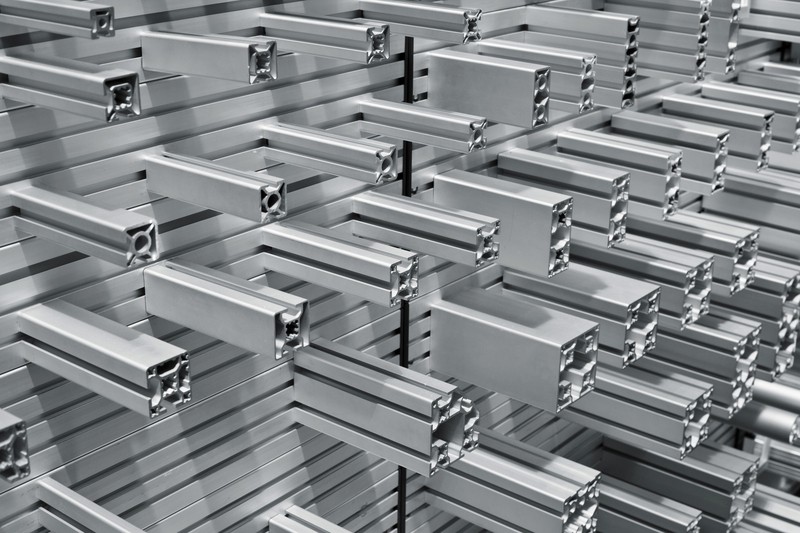
When it comes to aluminum alloys, the 2020 aluminum extrusion stands as a formidable choice for a multitude of manufacturing applications. Its distinction lies in its exceptional strength-to-weight ratio and superb machinability. But what precisely attributes to its strength, and how does it fare in practical scenarios?
The 2020 alloy, in essence, is a blend of aluminum (somewhere between 91-95%) coupled with a dash of copper (about 1-2%), manganese (roughly 0.5-1.2%), and magnesium (approximately 0.5-1.0%). These ingredients, when combined, create a formidable alloy that packs a punch in various applications.
Now, here's where it gets interesting. The 2020 alloy isn't a one-size-fits-all deal. It comes in different tempers – think of these as its various moods. These tempers, such as T3, T4, and T6, aren't just fancy names; they have a significant impact on the alloy's strength and properties.

So how strong is the 2020 aluminum extrusion? Well, that actually depends on several factors. Firstly, the specific blend of alloys used matters. And so does the temper of the material and the intricacies of the manufacturing process.
In terms of 2020 alloy strength, it typically has a strength of around 45,000 psi or 310 MPa. However, it's not quite that straightforward. This strength value can vary depending on the composition and temper of the alloy.
For example, when considering tempers, T6 stands out as particularly strong. It undergoes a process involving heat treatment and artificial aging, which grants it the strength within the 2020 alloy family. On the other hand, T3 temper also involves heat treatment but combined with working; while it might not be as robust in terms of raw strength compared to T6, it offers excellent flexibility.
While tensile strength is crucial to consider in evaluating extrusion' performance, other properties like yield strength (the point at which deformations become permanent) compressive strength (resistance to being crushed) shear strength (ability to withstand forces applied perpendicular to its surface) fatigue strength (resistance against repeated stress cycles) and impact strength (ability to absorb shocks) are equally important depending on their applications.
Now, let's delve into the tempers available for the 2020 alloy extrusions. Each one possesses characteristics that make them suitable for use.
1. T3 Temper; This option involves a process of heat treatment followed by working. It is particularly suitable for applications that demand formability. Think of components, structural members and machinery parts. Among the choices, this temper offers the most flexible characteristics.
2. T4 Temper: Also known as "solution heat-treated and naturally aged," it offers a balance of strength and formability. Think automotive parts, structural members, and machine components. It's got more strength compared to T3 but retains good ductility and formability.
3. T6 Temper: This one's the heavyweight, often used in aerospace components, aircraft fittings, and robust structures like truck and bike frames. Thanks to its "solution heat-treated and artificially aged" process, it's the strongest but sacrifices some ductility and formability.
The 2020 aluminum alloy extrusion has earned its reputation for reasons;
1. Composition; The addition of a small amount of copper, as a secret ingredient, enhances its strength and hardness.
2. Heat Treatment; Through heat treatment, the 2020 alloy can be strengthened further, making it exceptional for high stress applications.
3. Grain Structure; Its grained structure helps it resist deformation, adding to its strength.
4. Mechanical Properties; With a strength to weight ratio, it is widely chosen for applications.
5. Corrosion Resistance; The 2020 aluminum extrusion profile withstands corrosion, ensuring lasting performance even in harsh environments.
And here's the fascinating part; its strength can be boosted more through working techniques like rolling or drawing. These processes increase the alloy's dislocation density, adding a dose of toughness.
Aside, from the three tempers there are additional options available – T5, T42, T8, T9, T10, T11 and T12. Each temper has properties tailored to specific tasks. However, keep in mind that these characteristics may vary depending on the mix of alloys and manufacturing processes involved.
To sum up, the 2020 aluminum alloy is more than a metal. It plays a role in industries offering strength, flexibility and dependability across various applications. Whether it’s up in the air in an aircraft or providing support for a truck frame, this alloy consistently proves its worth. Therefore, when you come across the 2020 alloy time, remember that it possesses not only strength but also exceptional versatility.
Shishan Production Base
Nonferrous Metal Industrial Park, Xiaotang, Shishan Town, Nanhai District, Foshan City, Guangdong Province
Gaobian production base
Gaobian Zhangbian Industrial Zone, Dali Guangyun Road, Nanhai District, Foshan City, Guangdong Province
Company summary: + 86-757-85558828
Fax: + 86-757-85550238